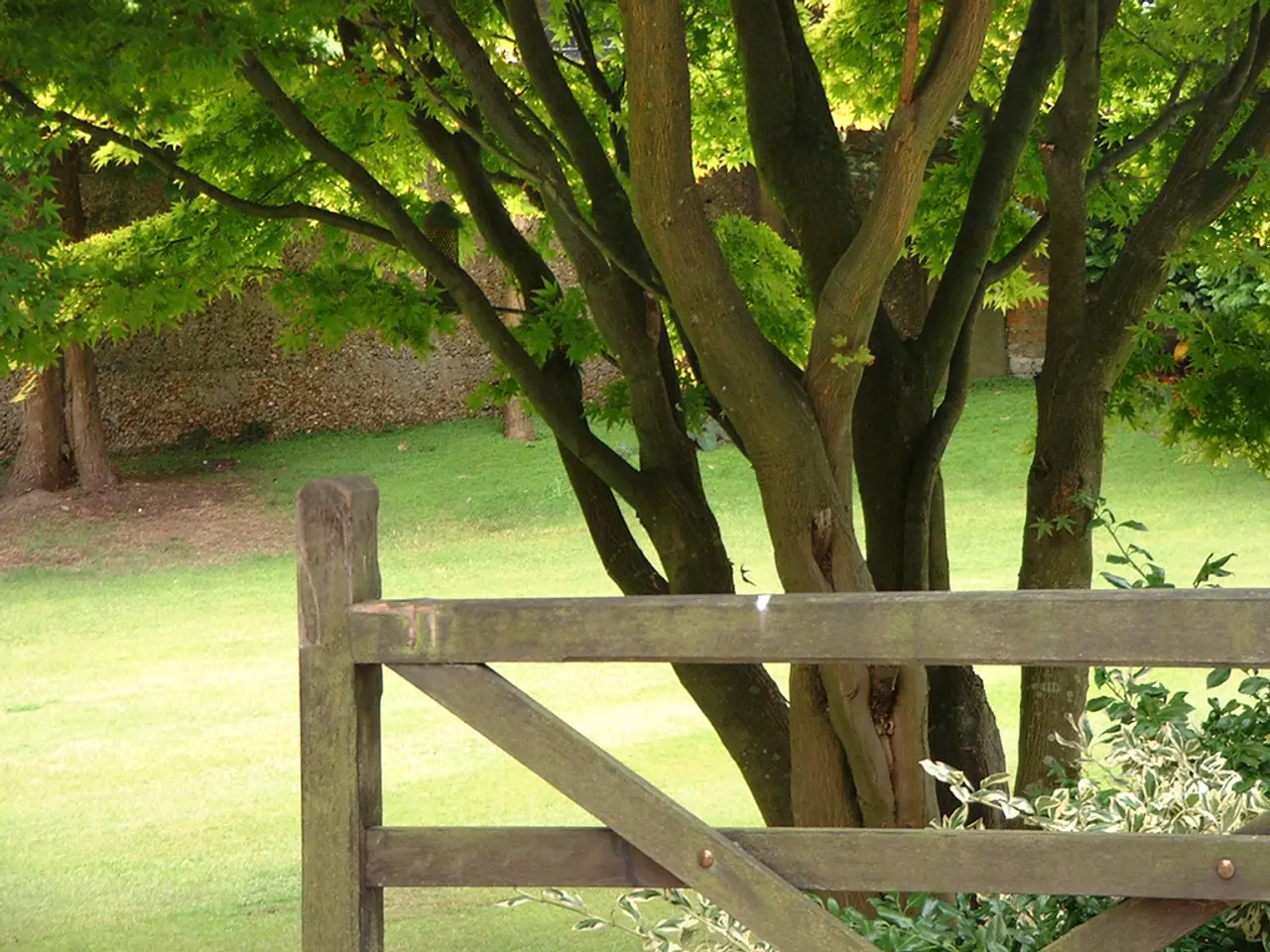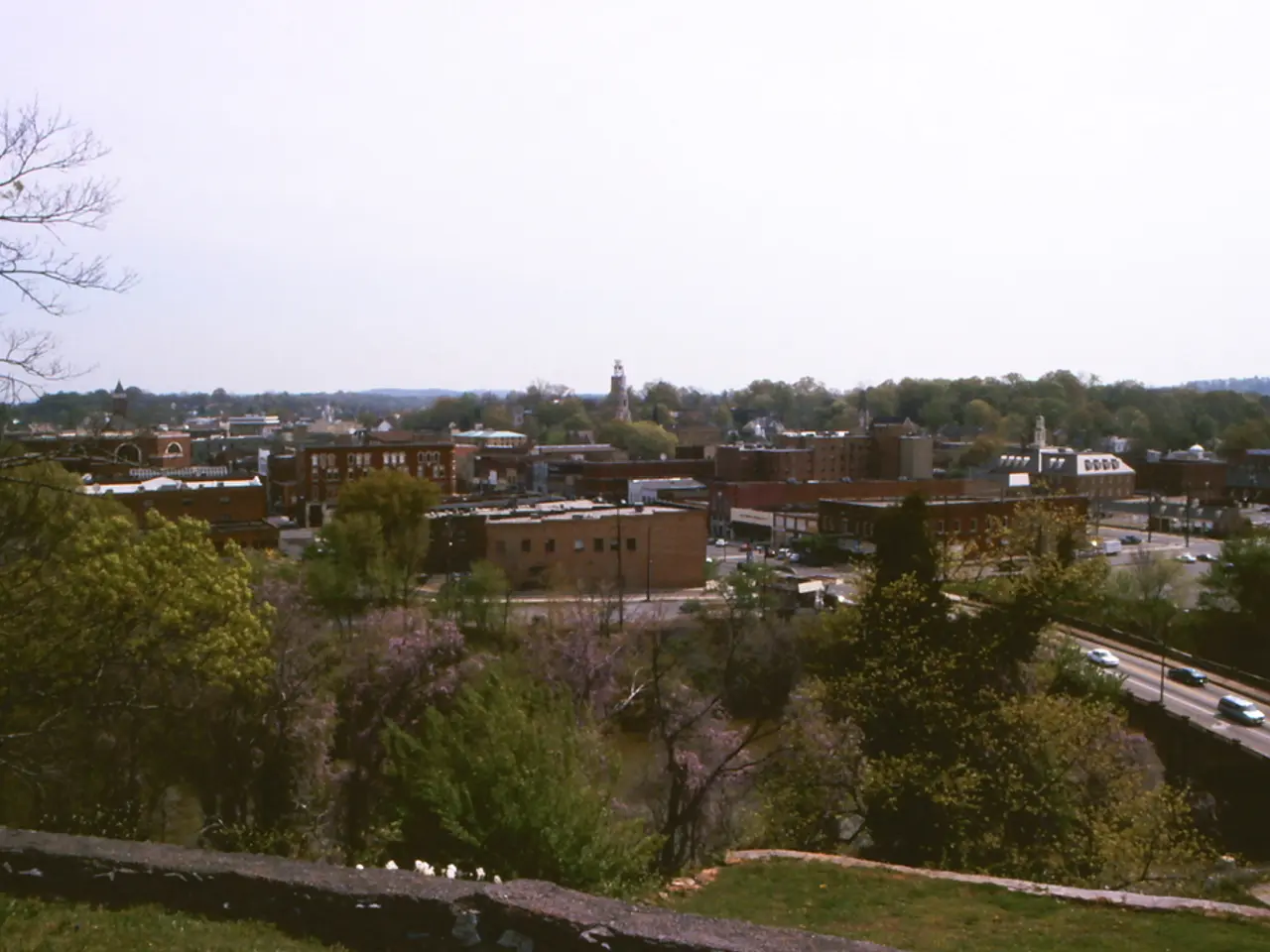Urban Ecosystem Design guided by Landscape Ecology for more Sustainable Urban Spaces
In the pursuit of creating more sustainable cities, urban planners are increasingly embracing the principles of landscape ecology. This approach, which focuses on the structure and features of a landscape and their impact on various species and ecosystems, can help in designing cities that are not just green, but teeming with life.
A city's landscape is a mosaic of distinct areas, often referred to as patches. These patches, which can range from clusters of shrubs to trees, serve as habitats for numerous species. By applying landscape ecology principles in urban planning, we can enhance green infrastructure design, improving biodiversity, habitat quality, and ecological connectivity.
One key aspect of this approach is the creation of habitat patches with optimal shapes and connectivity. Urban green spaces shaped with rounded edges and natural boundaries, as opposed to sharp and angular ones, can reduce edge effects harmful to sensitive species, thereby improving habitat viability.
Another crucial element is ecological connectivity. By establishing green corridors, we enable wildlife movement through urban mosaics, mitigating habitat isolation and supporting diverse species survival. This is particularly important as fragmentation, a common issue in urban landscapes, can reduce biodiversity by up to 75%.
Landscape ecology also helps differentiate between usable habitats (patches) and non-habitat spaces (matrix). This distinction allows planners to focus on maximizing viable habitat area and reducing fragmentation, ensuring that green spaces are not just present but also functional.
Incorporating native or regionally adapted vegetation is another important aspect. This boosts biodiversity, supports pollinators, and reduces chemical inputs, all critical for sustainable ecosystems. Additionally, features like rain gardens, bioswales, and green roofs, aligned with site-specific assessments, can optimize water use and quality, further sustaining urban ecosystems.
Moreover, the use of sustainable materials and long-term stewardship ensures that green infrastructure functions effectively over time. Applying durable, eco-friendly materials and committing to maintenance plans that emphasize resilience are essential for creating green spaces that are not just beautiful but also functional.
By moving beyond simplistic metrics like total green cover and embracing landscape ecology, urban planners can create more resilient, low-carbon urban environments that support rich biodiversity and provide enduring ecological and social benefits. This approach aligns urban design with natural spatial patterns and ecological processes, ultimately fostering sustainability that includes habitat conservation, climate adaptation, and enhanced community well-being.
In conclusion, considering not just the quantity but also the quality and structure of green spaces is essential for creating truly green cities. By understanding and implementing landscape ecology principles, we can help urban environments thrive, supporting a rich array of species and promoting a more sustainable future.
References:
[1] European Landscape Convention. (2000). Council of Europe.
[2] National Research Council. (2011). Urban green: Investing in the natural infrastructure of cities. National Academies Press.
[3] Forman, R. T. T., & Godron, M. (1986). Landscape ecology. Springer Science & Business Media.
[4] Satterfield, T., & O'Callaghan, J. (2015). Urban ecology: Principles and applications. Wiley-Blackwell.
[5] De Groot, R. S., Fahrig, L., & Hulme, P. E. (2012). The urban ecological footprint: A review of the concept, its components, and its measurement. Urban Ecosystems, 15(1), 1-20.
- Urban planners, in striving for net zero cities, are turning to nature conservation, adopting landscape ecology to design cities vibrant with life.
- The environment and biodiversity can be enhanced by using landscape ecology in urban planning, focusing on patch structures that provide habitats for various species.
- Urban green spaces that integrate principles of landscape ecology can reduce carbon emissions and pollution, promoting a healthier ecosystem for all.
- By creating habitat patches with optimal shapes and connectivity, urban planners can minimize pollution impacts on sensitive species, fostering a sustainable lifestyle.
- Sustainable fashion-and-beauty and home-and-garden choices, such as using native vegetation and eco-friendly materials, can contribute to the conservation of nature and ecosystems.
- Science and environmental-science research can provide insights for urban planning, helping to optimize water use and quality, ensuring a sustainable future for our cities.
- By embracing landscape ecology and fostering ecological connectivity in urban design, we can create resilient, low-carbon cities that support biodiversity and promote a higher quality of life for people and nature alike.




